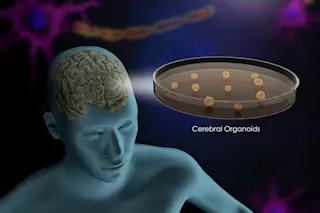These pea-sized lumps of cells don’t look like much, but they are mini-brains, also called brain organoids, that were grown in a lab using human stem cells.
And for the first time, scientists have created mini-brains with humanlike neural networking capable of producing brain waves similar to those observed in premature babies. The work comes from a team of scientists at the University of California in San Diego who had their research published in Cell Stem Cell on Thursday.
“We never had a brain organoid that can function like the human brain,” said biologist and researcher Alysson Muotri. “The electrical activity of these brain organoids are emitting something we see during normal human development. So, it’s a strong indication that what we have should work and function like the human brain.”
These brain organoids are still far from real brains. But according to Muotri, it’s a step toward growing a ...














